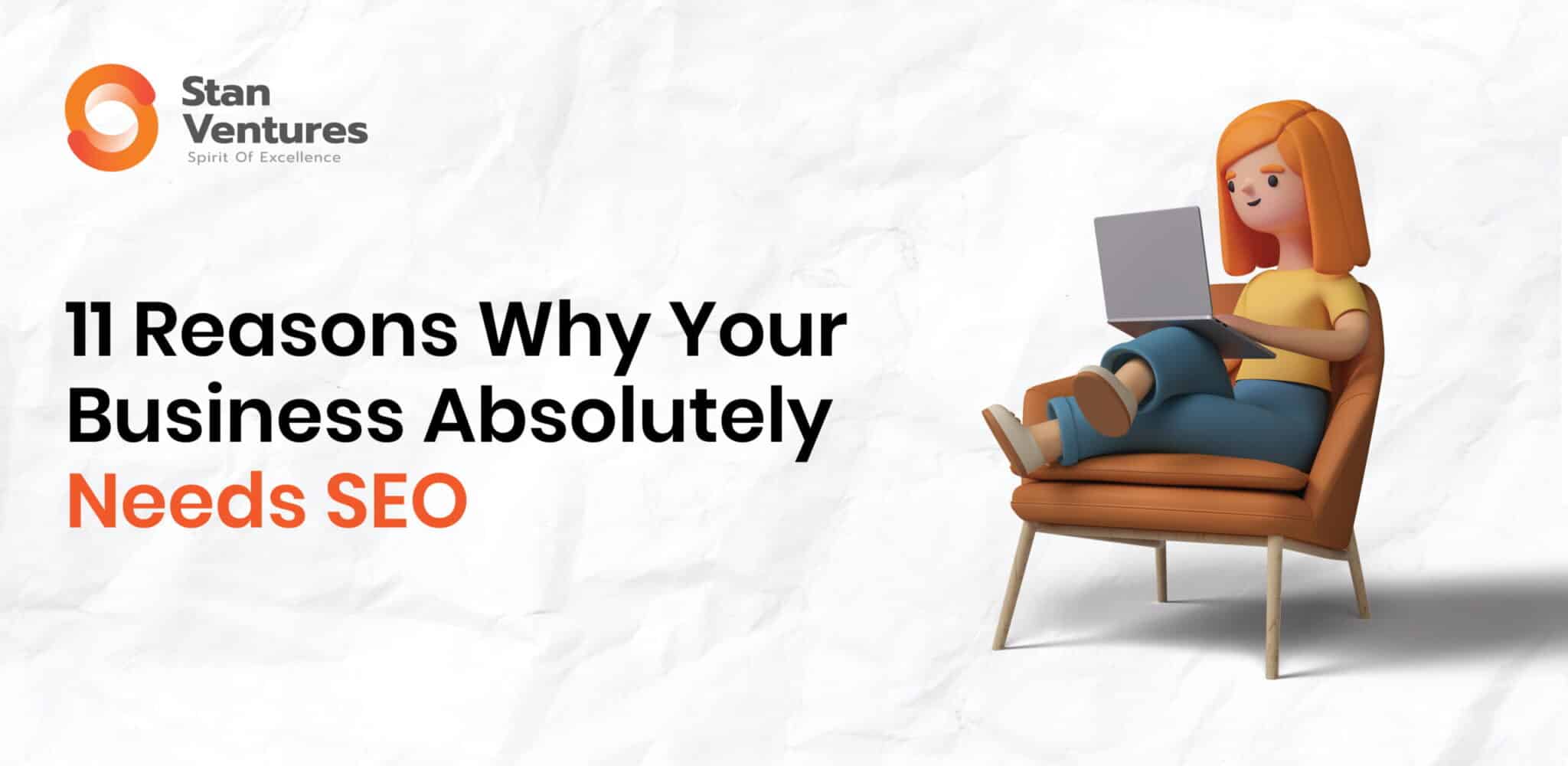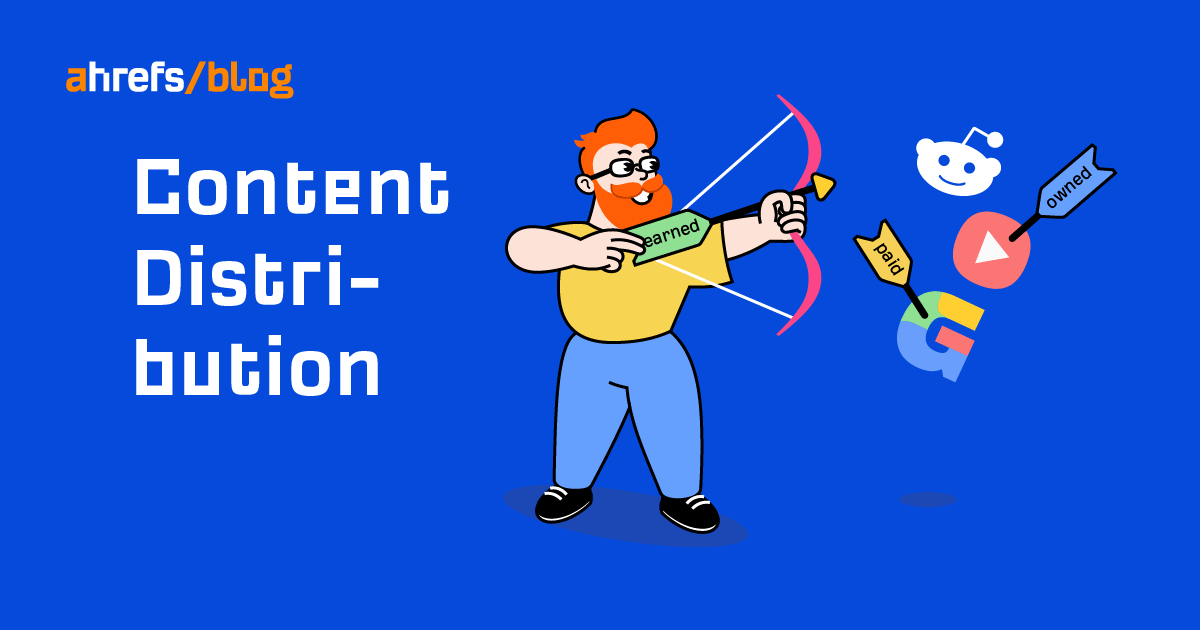30 Must-Avoid SEO Mistakes for 2022
Search engine optimization can give your website an edge in the SERPs. To be search-engine friendly, you must ensure your SEO techniques align with Google Webmaster Guidelines. However, it’s not easy keeping up with the latest optimization techniques, and...

Search engine optimization can give your website an edge in the SERPs. To be search-engine friendly, you must ensure your SEO techniques align with Google Webmaster Guidelines.
However, it’s not easy keeping up with the latest optimization techniques, and if you don’t do them right, you may have to bear the brunt of Google penalties.
If your SEO strategy is flawed, your website’s search engine ranking will suffer. To prevent Google from issuing manual penalties against your website, avoid common SEO mistakes like keyword stuffing and duplicate content.
In this post, we’ll discuss the common SEO mistakes you can make on your website and how to avoid them to stay atop your competitors and provide a great user experience for your target audience.
1. Poor Understanding of Your Target Audience
Various factors influence the decision when consumers develop an affinity for a brand. Among the most important are product quality, brand communication and customer experience. People want to interact with brands that are responsive and customer-centric.
A business’s most valuable asset is its customer base. However, marketers who don’t understand their target audiences are unable to market effectively, which could lead to lost revenue opportunities.
Therefore, understanding your audience is key to growing your brand. When companies don’t take the time to understand search intent and how consumers’ behavior changes over time, they risk leaving their customers dissatisfied.
Therefore, you need to understand the types of search queries your target audience might look for and the words they use when searching. This will help you target keywords and write content addressing customer pain points.
Many marketers make the mistake of assuming that demographics like age, profession, and location provide enough information to craft messages that resonate emotionally with their audience.
One way to get to know your customers better is to use the Acquisitions tab on Google Analytics to find out where your target audience comes from and create more detailed buyer personas based on it.
In addition, you should also engage with your customers in real-time through live chats, messaging, phone interactions and social media. Getting to know your customers and their needs on a personal level can help you better understand and serve them.
2. Lack of An SEO Strategy and The Roadmap to Achieve It
Most businesses fail because they lack an SEO strategy. Without a road map to follow, it isn’t easy to focus on the business aspects that will lead to better search engine rankings.
Instead, it’s a smart move to hire an SEO agency for your business if you want to streamline different aspects of your business site using helpful tools and platforms.
An SEO agency has considerable experience with multiple clients in various industries, making it very knowledgeable about which strategies are most effective.
When these agencies have gone through years of trial and error, their knowledge base is much greater than the average company. This level of expertise gives them a head start on what will produce the desired results for you.
Doing SEO can be risky if you’re unsure what you’re doing, opening the doors for search penalties, spam, and hacking. One of the many reasons it is recommended to hire a professional SEO firm is that they know how to avoid these adverse outcomes while keeping your website safe!
3. Lack of Quality Content on the Site
Sometimes, focusing on technical details can overshadow the need for quality content. For example, a technically sound website with great UI and UX can fail to keep the audience engaged without quality content.
Content that doesn’t provide value to the audience will have a tough time keeping the audience engaged on your website. That’s why businesses must invest in quality content creation.
When you work with content creators for your brand, they will use your company’s unique tone when creating content. Content that answers common user queries while enriching people’s knowledge of your industry is the type of content that will attract and engage readers.
SEO and content go hand in hand. You must pay attention to the importance of creating high-quality content if you want to boost your page rankings. Additionally, high-quality content also helps generate backlinks from authority websites and boost your website’s credibility and trustworthiness.
4. Publishing Copied Content
Content theft is a violation of Google’s webmaster guidelines. Copying content from other websites and publishing it as your own can lead to a penalty based on the Panda algorithm by Google.
As per the update, Google will lower the rank of any website that produces low-quality or copied content. Therefore, writing original content for your website is always advisable to get higher rankings in SERPs.
Creating original content is a great way to drive traffic to your website. If you pay close attention to keywords, new articles can serve as a big boost for your ranking and business.
More importantly, it’s an excellent way to establish yourself as an authority in your particular niche that automatically makes people trust what you say or sell.
5. Skipping Meta Tags
Optimizing your content with target keywords is not enough to ensure that it will rank on search engine result pages (SERPs). Meta tags are vital SEO elements that should not be missed at any cost.
When search engine spiders crawl your site, they consider these elements. Not adding them to your web pages decreases your chances of ranking high in search results.
Title tags are the most important of all meta tags out there because they impact search engine results pages and are also seen by those browsing the internet.
The meta description is also an important meta tag as it tells search engines and potential visitors what your web page is about.
6. Missing Quality Links on the Website
The links pointing to your site can significantly influence its ranking. Search engines give more weight to links from sites that are considered trusted and authoritative, so getting good links is essential.
Additionally, getting links from sites with high domain authority (DA) boosts your web traffic by bringing quality referral traffic to your site.
However, just because a site has links doesn’t mean they’re good ones. You need to check that the sites linking to yours aren’t spam or coming from link farms.
Spammy links can harm your website’s ranking. Depending on the severity of the spamming, you might lose a few ranks on SERP or get blacklisted from Google altogether.
7. Overdoing Internal Links on the Website
You can’t control the number of external links your website collects, but you can influence how many internal links your website has. Adding your best-performing pages as internal links to new content gives those pages a boost of visibility.
If the topic of your new content is completely unrelated to the topic of your older pages, don’t interlink them as it will confuse your visitors.
Internal links are crucial for SEO because they signal to Google which pages are most important to a particular website. Google uses them to understand the overall structure of a website better.
A sitemap can also be used to communicate this information, but it’s even easier when there is already a logical structure made up of existing internal links within the webpage.
Adding too many internal links to your content can make it look unnatural. Moreover, too many internal links will also reduce their worth.
8. Not Investing in a Mobile-friendly Website
The vast majority of internet users are now mobile. Of course, it goes without saying that if your website isn’t optimized for mobile, you’ll lose many potential customers.
So invest in a mobile-friendly website and provide a good user experience. A mobile-friendly site can help build trust with customers by making it easy for them to navigate, find information and make purchases.
The effort required to design a website that works well on all devices will pay off because people today prefer going online via phones rather than laptops or desktops.
Your business needs to ensure that your site can be viewed on various mobile devices. This way, you can provide your customers with the best possible experience, which will undoubtedly pay off when it comes time for you to make more money than ever before.
Listen to what an SEO industry expert says about the SEO mistakes to avoid.
9. Not Focusing on Site Speed
Site speed is an essential factor determining a website’s user experience. For example, a slow-loading site can frustrate the end user, leading to a high bounce rate.
Several factors can contribute to a slow site, such as unoptimized images, JavaScript issues, poor hosting, etc. Hence, fixing the technical issues on your site that affect it is vital to ensure that the site speed is optimal.
It’s no secret that site speed is important for online businesses. In fact, according to Google, a 1-second website speed improvement can increase conversions by up to 27%. By keeping your website’s loading speed fast, you’ll keep customers on your site longer, which increases their chances of making a purchase.
To keep prospective buyers coming back for more, you must ensure they have a good first impression of your company. If they visit your site too often and spend too much time waiting for pages or images to load, they’ll probably never do business with you.
This can be a big problem if you want retention rates to remain high and customer acquisition costs low. Site speed is more than just a usability issue. Site speed also impacts your ranking in search engines like Google, helping your business get discovered by more potential customers.
10. Not Considering the Importance of Social Signals For SEO
Social signals are indicators of a website’s collective popularity as perceived by search engines. A site’s social media activity contributes to its ranking in the organic results and is seen as another form of “citation,” similar to backlinks.
Social signals are significant in determining the ranking of your website on SERPs. Social signals are indicators of excellent domain authority, showing a web page’s worth.
Sharing and liking posts demonstrate that the page is authentic with engaging content. In addition to the usual SEO tricks, strategies targeted at increasing social media engagement can also improve your website’s search engine rank.
While social signals may not directly affect your rankings with Google, they can certainly help your content be found and linked to by other websites. This can also lead to direct traffic from your social media profiles, which is the best way to build up your SEO strategy.
11. Not Utilizing Analytics Tools to Measure SEO Performance
When you’re investing a lot of time and energy in SEO, it’s important to know whether or not the effort paid off. Your search engine optimization results can tell you whether you need to change or tweak what you’re doing or whether you’re on the right track.
SEO specialists are inundated with an enormous number of data sets. But the only way you can really reach your goals and make accurate assessments is first to identify the key performance indicators (KPIs) that will help you reach your goals, then match those metrics up against what your company wants to do.
Set up analytics using SEO tools. to track your website’s search engine optimization performance. Google has its own tools like Google Analytics and Google Search Console that you can use to get a detailed overview of your website performance metrics.
Additionally, many other SEO tools can help you improve different aspects of your SEO strategy, such as organic search traffic analysis, keyword research, competitive analysis, link management, conversion rates, and much more.
12. Not Optimizing For Local SEO
If you are running a business focused on a particular city or region, you must optimize it for local search. Local search optimization begins with choosing location-specific keywords to optimize your content.
You’d also want to add your address and phone numbers on your pages, such as the header or footer section, so they appear in local search results.
Moreover, you also need to ensure that you have a Google Business Profile and your business is listed on different local directories with consistent NAP information.
Optimizing your Google Business Profile can help you stand out on Google Maps. This increases your chances of getting more calls and visits since Google Maps was created to make it easier for users to find local businesses.
Local SEO also increases your online visibility, making your business more discoverable by new customers. This leads to more foot traffic at your physical store, resulting in more leads, subscriptions, sign-ups and sales.
When it comes to local content marketing, you should naturally talk about your local area and involve your local community. This helps build your reputation as an expert in your field and strengthens your business’s brand loyalty and engagement.
13. Not Targeting Relevant Keywords
Keyword research is an integral part of SEO. It helps you determine which keywords will be most effective for your website, allowing you to rank higher in Google’s search results.
If you don’t research your keywords well, you might target the wrong ones to optimize your site. For example, if you have a local audience but are using global keywords, your reach might be lower and less visible for related searches.
When you do keyword research, keep in mind what users are looking for when they type in a query. Also, keep in mind the search intent behind that query. Choosing keywords without identifying user intent is a waste of time. That’s why understanding user intent is so crucial to any successful SEO strategy.
Competitor analysis should also be a part of every SEO professional’s keyword research process. By analyzing your competitors’ websites, you can uncover what topics they’re targeting and how they’re publishing content for those topics. You can also find out why they’re ranking above you and identify missed keyword opportunities to tap into.
When choosing keywords, targeting high-volume keywords is important, but don’t ignore longtail keywords. They are actually quite useful because they are searched for often, even if they aren’t as competitive, which means that you’ll have a higher chance of ranking for them.
In addition, incorporating LSI keywords into your content makes it more contextually relevant and helps boost your website’s ranking in search engines.
14. Using the Same Anchor Text For Every Link
With the Penguin algorithm update, Google began scrutinizing “naturally” acquired links more closely. If a large number of your site’s inbound links contain the same anchor text, this can appear unnatural and may be a sign that you have been engaging in link schemes.
It’s better to vary the words you use as anchor text; for example, using the name of your business or partial-match keywords instead of exact-match keywords. This will make your content look less spammy and improve its readability.
15. Focusing on Link Building Quantity Than Quality
Link building is an important part of any SEO strategy. Yes, the number of quality links matters. The more quality links your website has; the more Google will see you as an authority in your industry and rank your website accordingly.
But quantity means nothing if all the links pointing to your website aren’t worth anybody’s time. Therefore, your focus must be first on the link quality rather than quantity.
When building links on your website, you must ensure that they come from high-quality sites relevant to your niche. A single link from a high-quality site is worth more than hundreds of links from low-quality directories. Quality backlinks are harder to achieve, but honest backlink-building efforts give you satisfactory and lasting results.
One way to build your website’s success is to earn backlinks from credible and trusted domains. By focusing on getting backlinks from reputable sources, you will avoid Google penalties and increase your website’s success in the long term.
The best way to get high-quality backlinks is to create content other people want to link to. This can be instructional content, essay-style content, research-based content, blog posts or articles or even infographics
16. Ignoring HTTP Status and Server Issues
A website’s most crucial technical issue is its HTTP status. These include a 404 error (Page Not Found), which indicates the server response on the back of a search engine request.
When the dialogue between a user and the website gets interrupted, it also creates trust issues for the user on the site. Prolonged server issues may not only lead to a high bounce rate due to inaccessible content and may also affect your SERP rankings if the search engine spiders are unable to fetch content from your site that users are looking for.
The primary reasons that affect HTTP status on a website are broken pages, broken internal or external links, and a slow response time of the server or server denying access to the page.
Technical SEO issues can plague any website. To stay on top of your site’s technical issues, make sure to run crawls monthly and continuously work on improving your site so that you never fall behind from technical SEO perspective.
17. Neglecting External Link Optimization
In SEO terminology, the term ‘external link’ is used to identify links that point back to your website from another site. Relevancy, authority, and quality of links are the most critical metrics for external links.
Volume does matter as well. Optimizing external links is as important as optimizing internal links. You need to ensure that the external links on your site come from a trustworthy domain (HTTPS) relevant to the content it is being linked to, don’t have underscore and no-follow attributes URL, etc.
Moreover, you shouldn’t overwhelm your reader with too many external links, as they might feel like you’re using them as a means to further your own SEO goals.
18. Forgetting Accelerated Mobile Pages (AMPs)
AMP is a framework that allows publishers to create web pages that load instantly on a mobile phone. Rapidly produced content from news publishers and bloggers has propelled AMP’s success.
AMP also allows publishers to display ads on their sites in a format that is easy for viewers to read and interact with, resulting in higher ad viewability rates and increased revenue opportunities.
Another benefit of AMP is that it appears in Google’s Top Stories list, which readers are more likely to click on these pages, leading to increased traffic for your site.
Various elements can affect your rankings in SERPs, including how quickly your page loads on a mobile device. AMP itself does not affect your position in SERPs, but it can help speed up elements that impact your rank.
You must ensure that your site’s HTML code complies with Google’s AMP guidelines, find invalid AMP pages on your site using a site audit tool and fix them to avoid SEO disadvantages.
19. Not Focusing on Branding and Brand Searches
Google loves brands and branded searches. If you want to rank well on Google, you must focus on branding. Using branded keywords within your content and optimizing your site for branded searches could build trust in your customers and help establish your business as an authority in your niche.
For many large and established businesses, their branded terms make up a substantial part of their keyword profiles. People are most likely looking for these businesses or products by name, indicating they’re closer to making purchases.
In fact, Google has found that branded words convert at 2x the rate of non-branded words, so it makes sense that businesses shouldn’t ignore them!
Other brands will likely not compete for your branded keywords as they’re busy trying to optimize for their own branded keywords. Your branded keywords are a golden opportunity; it should be easy to secure ranking for them even if you haven’t spent much effort on them until now.
When you spend more time on specific brand-related keywords and phrases, you can also open the door to new strategic keyword targeting possibilities.
20. Not Using 301 Redirects
Redirecting is important when you migrate your site. This applies whenever you change a URL. If you don’t do so, your site visitors will go to a 404 page and leave your site immediately.
With a 301 redirect, you’ll guide your visitors from the existing page to the new page where the content now exists. The 301 redirect also passes the link juice from your previous page to the new one.
However, if you want to redirect visitors without passing the link juice, go for a 302 redirect.
21. Having Irrelevant Newsletter Pop-Up on Every Page
Having multiple pop-ups on your website leads to a poor user experience. Therefore, you need to be careful about the pop-ups you use on your website and keep them to a minimum.
You should also take note of the timing of the pop-up. You don’t want to disturb your visitors with a pop-up as soon as they land on your website.
Pop-ups aren’t quite favorable for both the visitor experience and SEO. But, if you’re worried about missing out on email subscribers, there are many other ways of attracting qualified leads; for example, moving your CTAs closer to conversion points where people make purchases, such as checkout pages, will result in higher conversion rates.
22. Not Using Canonical Tags
Canonical tags are used to consolidate link equity from duplicate pages, improve the crawling and indexing of your website, as well as tell Google which page you want to appear in search results.
Not using a canonical tag can lead to a Google penalty due to content duplication. Since duplicate content is a black hat SEO practice, using the rel=canonical tag is essential.
For example, if you have a site called abc.com and www.example.com, and so are example.com/index.html and www.example.com/hompage.html, you should use the rel=canonical tag. This tells Google that the pages are the same. You should also ensure that the rel=canonical URL is shown in search results and not the duplicate URL.
23. Missing Hreflang Tags
With the hreflang tag, Google can show your website in the country and language of the visitor. If you are not using it, it’s a disadvantage for your site’s SEO since visitors won’t be able to view your content in their local language.
The hreflang tag should be placed in the head element within your site. If your site is translated into multiple languages, you must write a hreflang tag for each. Doing so will increase the incoming traffic to your site and boost conversion and dwell time.
24. Not Having an HTTPS Based Site
HTTPS stands for Hypertext Transfer Protocol Secure. HTTPS safeguards the communication that takes place between your website and your user’s browser.
This ensures no one else can interfere with the data going back and forth. HTTPS offers three levels of protection on your website encryption, data integrity, and authentication.
Unprotected communications put you at risk of having your users tricked into giving up sensitive information, installing malware, or inserting their own advertisements onto your site.
Therefore, if you don’t switch from HTTP to HTTPS, it might discourage visitors from sharing their personal information on your site or making any monetary transactions.
25. Not Including a Blog on Your Website
It’s important to have a blog on your website. A blog is a great way to share information with your audience beyond your products and services. You can use your blog to educate your customers about your niche, answer their common questions and build a stronger relationship with them.
You can start a blog on Blogger or WordPress, pick up a suitable template, add categories and tags, and add multiple authors. You can also connect analytics tools to your blog platform to measure the performance of your blog posts.
When you publish a blog post, it’s one more indexed page on your website, making you appear higher on the search engine rankings. Blogging also increases your brand exposure on social media because every time you create new content, it creates a chance for someone to share what they are reading, thus exposing them to your company and turning them into potential clients.
Furthermore, if you continue to make valuable posts, you will eventually become recognized as an authority within your field.
26. Not Adding CTA to Your Site
Once visitors land on your site, you must keep them hooked to it. To do so, you have to leave tiny cues to make them keep exploring your website. These cues are CTAs or Call-to-Actions. These buttons prompt users on your site to take action, such as “buy now” or “know more.”
Calls to action (CTAs) are vital for both businesses and customers. Many people rely on the CTA at the end of each webpage to take the next step. Omitting this makes customers feel lost and confused. Losing interest means fewer conversions, which is not great news for your business.
Therefore, ensure that you add CTAs to every page to clarify the goal. But be careful not to overdo it. You must also ensure that the CTAs stand out from the rest of the page regarding design and color. If your CTA button doesn’t stand out from the rest of your page’s elements, it won’t attract your visitors to click.
27. Neglecting Dated Content
Content gradually loses importance over time. Search engines prioritize the most accurate and valuable information for their users. As content ages, it falls in ranking, negatively impacting any SEO efforts.
Google constantly changes its algorithm, so if you don’t go back and update old articles, you run the risk of them being penalized or even deindexed for having out-of-date information without even knowing about it until too late.
To keep your readers engaged and encourage them to spend more time on your website, ensure that your content is fresh and features the most updated information.
It takes much less time to rewrite an old article than to write a new one. This doesn’t mean you should pause your content creation efforts altogether, but practicing both techniques has the potential to bring results with less effort.
28. Forgetting About Image Optimization
Image optimization is another critical SEO aspect that many people ignore. Large image files can slow down your site and lead to a poor user experience. Therefore, you must use image optimization tools to reduce the file size of the images on your site to optimum and enable your site to load faster. Image optimization helps websites load faster, boosts their search engine rankings, and enhances the user experience.
Another vital thing about image optimization is not using the proper filename and alt text for images. This is poor practice and should be avoided. All the pictures on your site should be given a proper file name and alt text that tells what the image is about.
Since Google cannot read images, it follows the alt text to know what the image is about and crawl it properly. It is also helpful for sight-impaired people or sites that block images.
29. Not Optimizing URLs
An optimized URL can make it easier for search engines and users to guess what a landing page is about, and it can affect your site in more ways than just ranking. SEO-friendly URLs get more clicks, provide a better user experience, look safe, are easy to remember, and make it easier for crawlers to index your content.
URLs should be short and descriptive, but they also need to help search engines understand what the page is about. URLs don’t impact rankings, but it can be good practice to naturally include keywords in your URLs. Use hyphens to separate words in your URL, and always use lowercase letters to write out the structure of your URLs.
30. Not Optimizing For Search Engines Other Than Google
While Google is a dominant player in most markets, it’s not the only one. Focusing solely on optimizing your site for Google could mean overlooking opportunities in other search engines.
If you regularly check your Analytics Reports, you must’ve noticed a significant rise in traffic from Google every month. But what if one of the updates by Google causes your website to penalize?
Your business could suffer significantly if you haven’t been building traffic on other channels. Even if you were dropped in your ranks wrongly, it might take a long time to recover.
So, it is essential to start building up traffic from different sources. Your visitors might come from other search engines like Yahoo, Bing and AOL. You must ensure that you optimize your site SEO for different search engines, such as registering your site on the Bing webmaster tool, creating Bing and AOL advertisements, etc.
Conclusion
This is our list of top SEO mistakes to avoid in 2022.
If you want to improve your website SEO and prevent such SEO mistakes, get in touch with professional SEO service providers in Stan Ventures.
Could you think of any other points to add to this list? Let us know in the comments below.
Author
Shreoshe Ghosh
Shreoshe is a content writer with 6+ years of experience and has formerly worked in academic and travel niches. In her current stint as an SEO content manager, she helps businesses voice their brands. Reach her @ Mail | LinkedIn | Facebook or View all posts by Shreoshe

 JaneWalter
JaneWalter 

































